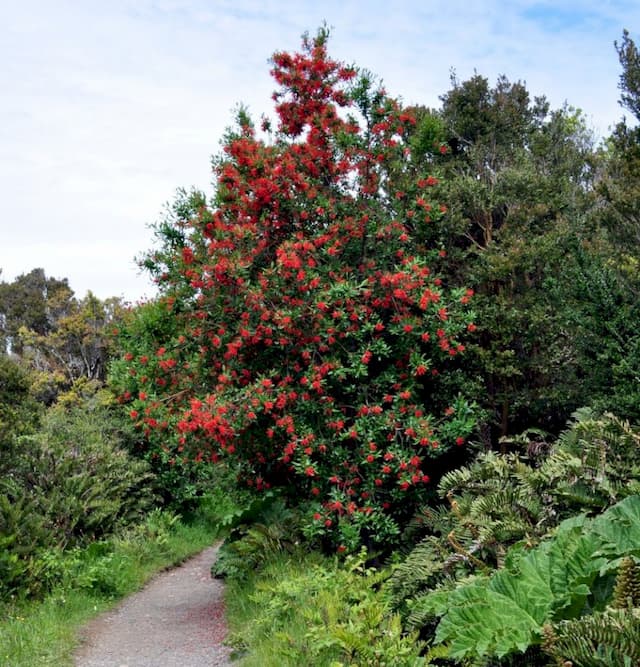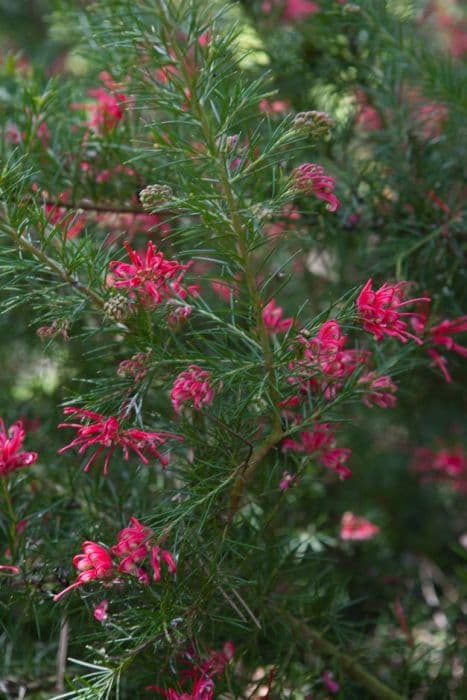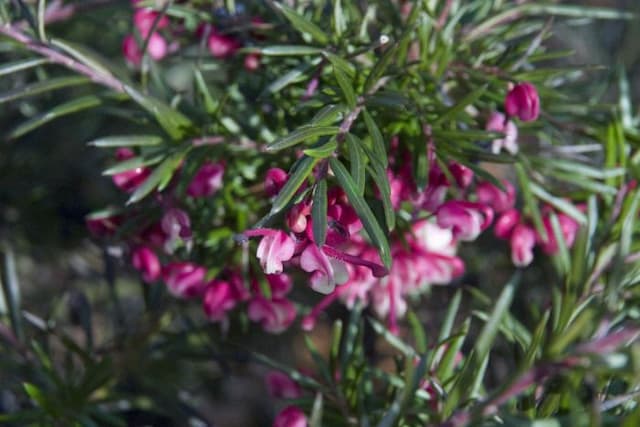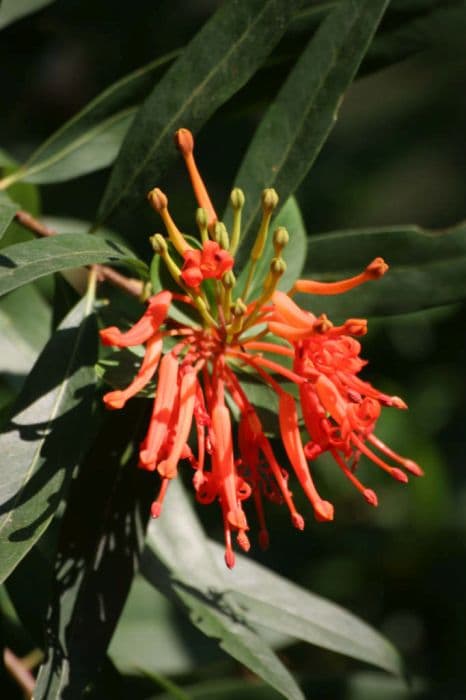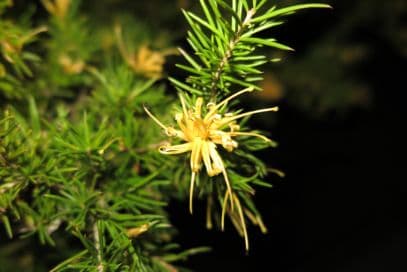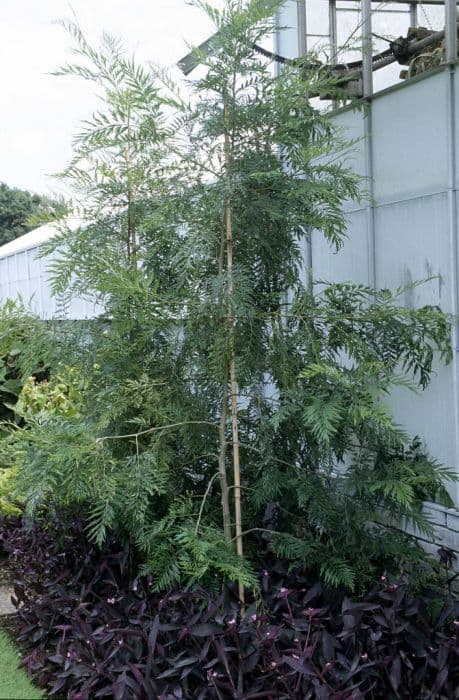Safari Sunset Leucadendron Leucadendron 'Safari Sunset'

ABOUT
The Leucadendron 'Safari Sunset' is a striking plant known for its vibrant foliage and decorative bracts. The leaves of this evergreen are typically a glossy green, although the color can deepen into rich shades of red as cooler weather sets in or when the plant is under stress, creating a spectacular display. The leaves are usually narrow and pointed, adding to the plant's distinctive look. The plant is famously adorned with large cone-like structures surrounded by colorful bracts, which are often mistaken for flowers. These bracts come in an array of fiery hues such as deep red, burgundy, or sometimes orange-red, and they contrast beautifully with the greenery of the plant. They can be especially dramatic when backlit by the sun, glowing with warm tones that catch the eye. Overall, the 'Safari Sunset' has a robust and erect appearance, with a well-branched structure that allows for a dense, full look. It's a favored choice for gardeners and landscapers looking to add a splash of long-lasting color to their arrangements due to its vibrant bracts, which hold their color for an extended period compared to actual flower blossoms. It's also a popular choice for cut flower arrangements, adding an exotic and dramatic flair to bouquets.
About this plant
 Names
NamesFamily
Proteaceae.
Synonyms
Safari Sunset Conebush, Safari Sunset Leucadendron.
Common names
Leucadendron 'Safari Sunset'
 Toxicity
ToxicityTo humans
The Leucadendron 'Safari Sunset', also known simply as Leucadendron, is not commonly known to be toxic to humans. However, individuals may experience skin irritation or allergic reactions from handling the plant, particularly from the sap, if they are sensitive. There is no widespread information suggesting significant toxicity upon ingesting parts of the Leucadendron to humans. As with any non-food plant, it is generally advised not to ingest it, and doing so might cause gastrointestinal discomfort or other non-specific symptoms due to its non-edibility.
To pets
The Leucadendron 'Safari Sunset', or Leucadendron, does not have a well-documented record of being highly toxic to pets. However, it is possible for pets to experience mild stomach upset if they ingest parts of the plant, as it is not part of their natural diet. To avoid the potential for an upset stomach or an allergic reaction, it is best to prevent pets from consuming the plant. Signs of an upset stomach in pets include vomiting, diarrhea, and lethargy, but such symptoms are generally rare for this specific plant. If you notice any unusual symptoms after your pet has interacted with Leucadendron, consult your veterinarian.
 Characteristics
CharacteristicsLife cycle
Perennials
Foliage type
Evergreen
Color of leaves
Green
Height
4-6 feet (1.2-1.8 meters)
Spread
3-4 feet (0.9-1.2 meters)
Plant type
Shrub
Hardiness zones
8
Native area
South Africa
Benefits
 General Benefits
General Benefits- Long-lasting blooms – 'Safari Sunset' is known for its vibrant, long-lasting flowers that add color to gardens and arrangements throughout the year.
- Drought resistance – This plant is highly adaptable to dry conditions, making it suitable for water-wise landscapes.
- Low maintenance – It requires minimal care once established, making it ideal for busy gardeners or those with little gardening experience.
- Attracts wildlife – The blooms and foliage can attract birds and beneficial insects to your garden, promoting biodiversity.
- Versatile landscaping – 'Safari Sunset' works well in a variety of landscaping themes, from modern to cottage gardens.
- Cut flower use – Its striking flowers and foliage make excellent cut flowers for indoor decoration.
- Seasonal interest – With colorful bracts that change throughout the seasons, it provides year-round visual interest.
- Tolerance to pests and diseases – This plant has good resistance to many pests and diseases, reducing the need for chemical intervention.
- Architectural form – It features an attractive, architectural form that can serve as a focal point in garden design.
- Erosion control – Its root system can help stabilize slopes and prevent soil erosion in your landscape.
 Medical Properties
Medical PropertiesThis plant is not used for medical purposes.
 Air-purifying Qualities
Air-purifying QualitiesThis plant is not specifically known for air purifying qualities.
 Other Uses
Other Uses- Photography Prop: The Safari Sunset's vibrant red bracts and unique shape provide an excellent prop for photographers looking to add a splash of color and exotic flair to their compositions.
- Eco-Friendly Dye: The colorful bracts of the Safari Sunset can be used to create natural dyes for textiles, offering an environmentally friendly alternative to synthetic dyes.
- Floral Jewelry: Crafty individuals can use small cuttings from the Safari Sunset to create floral jewelry such as earrings or pendants, preserving the beauty of the plant in wearable art.
- Landscape Design: Safari Sunset can be used in landscape architecture to create dramatic focal points or as a living fence for privacy due to its dense growth habit.
- Seasonal Decorations: The branches and bracts of Safari Sunset can be incorporated into wreaths, garlands, or centerpieces for festive fall or winter decorations.
- Art Supplies: Dried bracts and leaves from the Safari Sunset can be used in mixed media art projects or as natural brushes for painting.
- Teaching Tool: Biology teachers might use the Safari Sunset to exemplify plant defense mechanisms, as the bracts protect the flowers from herbivores and harsh environmental conditions.
- Cultural Ceremonies: Some cultures might use the bright bracts of the Safari Sunset in ceremonies or traditional rituals as symbols of vitality or prosperity.
- Thematic Gardening: Safari Sunset contributes to 'fire-themed' gardens aimed to replicate the colors of fire with its red and orange hues.
- Culinary Garnish: Although not a common culinary plant, creative chefs may use the non-toxic leaves and flowers for garnishing dishes, lending an unexpected visual element to plates.
Interesting Facts
 Feng Shui
Feng ShuiThe Safari Sunset is not used in Feng Shui practice.
 Zodiac Sign Compitability
Zodiac Sign CompitabilityThe Safari Sunset is not used in astrology practice.
 Plant Symbolism
Plant Symbolism- Change and Transformation: Safari Sunset, with its vivid coloration and changing hues, symbolizes the natural transitions and transformations that occur in life.
- Strength and Resilience: The hardy nature of the Safari Sunset reflects qualities of strength and the ability to thrive in challenging conditions.
- Optimism and Enthusiasm: The vibrant colors of the Safari Sunset flowers can represent a positive outlook and energetic approach to life's endeavors.
- Beauty and Elegance: Often used in floral arrangements for its striking appearance, the Safari Sunset conveys an aesthetic of elegance and natural beauty.
 Water
WaterSafari Sunset requires moderate watering, where it should be watered thoroughly when the top inch of soil feels dry to the touch. Usual watering frequency is once a week, but this can vary depending on climate conditions and the time of year. It's essential to avoid overwatering as this can lead to root rot. Provide about a gallon of water per plant for each watering session, ensuring that the water reaches deep into the root system to encourage strong growth. During the winter months, reduce watering as the plant's growth slows down.
 Light
LightSafari Sunset thrives in full sun conditions where it can receive at least six hours of direct sunlight daily. The best spot for this plant is in a location where it has unobstructed access to natural light throughout the day. However, in regions with very hot summers, some afternoon shade can be beneficial to prevent sunburn.
 Temperature
TemperatureSafari Sunset prefers mild climate conditions and performs best in temperatures that range between 50°F and 75°F. It can withstand temperatures as low as 20°F but should be protected from frost. Maximum temperature tolerance is about 90°F before the plant may start to exhibit signs of stress, such as wilting or leaf scorch.
 Pruning
PruningPruning Safari Sunset helps to maintain its shape and encourage bushier growth. It's best to prune in the late winter or early spring before new growth starts. Cut back any dead or diseased branches and shape the plant as desired. Pruning can be done annually or biannually, depending on how quickly the plant grows and the desired size.
 Cleaning
CleaningAs needed
 Soil
SoilThe best soil mix for the Safari Sunset Conebush should be well-draining, slightly acidic to neutral in pH, ranging from 6.0 to 7.0. A combination of equal parts peat, perlite, and coarse sand or fine pumice would provide good drainage and aeration, crucial for preventing root rot and accommodating this plant's preference for drier conditions.
 Repotting
RepottingSafari Sunset Conebush should be repotted every 2 to 3 years to refresh the soil and to accommodate root growth. However, they are tolerant of being slightly pot-bound, so only upsize the pot if necessary.
 Humidity & Misting
Humidity & MistingSafari Sunset Conebush prefers low to moderate humidity levels, making it suitable for most indoor environments. It thrives well with average ambient humidity but can tolerate drier conditions.
 Suitable locations
Suitable locationsIndoor
Place in bright indirect light, avoid overwatering.
Outdoor
Full sun, well-drained soil, shelter from extreme winds.
Hardiness zone
8-10 USDA
 Life cycle
Life cycleThe 'Safari Sunset' Conebush begins its life as a seed that germinates in well-drained soil with good exposure to sunlight. As a seedling, it develops a strong root system and foliage, requiring consistent watering while young. During the vegetative growth stage, 'Safari Sunset' enters a period of rapid growth, producing its characteristic lance-shaped leaves and woody stems. Once mature, the plant produces vibrant, bract-like flowers typically in the fall, which can be red, orange, or yellow and are attractive to pollinators. After pollination, the flowering structures give way to cones that contain seeds, completing the cycle when these seeds disperse. Throughout its life, which can last for many years, 'Safari Sunset' requires pruning to maintain shape and encourage more prolific flowering.
 Propogation
PropogationPropogation time
Late summer-early autumn
Propogation: The common name for Leucadendron 'Safari Sunset' is Safari Sunset Conebush, and it is typically propagated through semi-hardwood cuttings. This is usually done in late summer or early fall. To propagate, a semi-hardwood cutting of about 4 to 6 inches (10 to 15 cm) is snipped from the parent plant. The lower leaves are removed, and the cut end is often treated with a rooting hormone to encourage root development. The cutting is then placed in a well-draining potting mix, and a high humidity environment is maintained until roots establish, which can take several weeks. It's important during this time to keep the soil moist but not waterlogged to avoid rotting the cutting.

